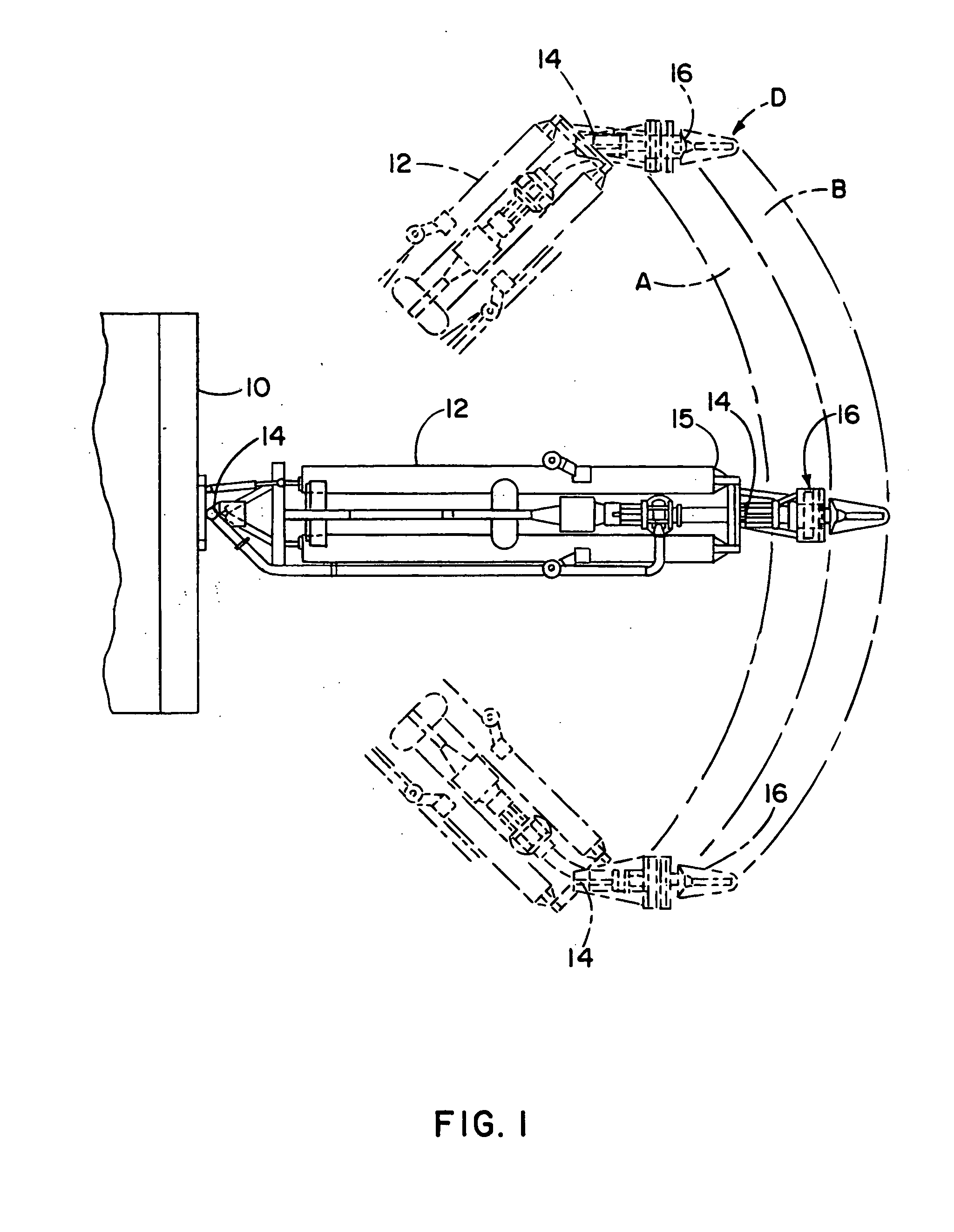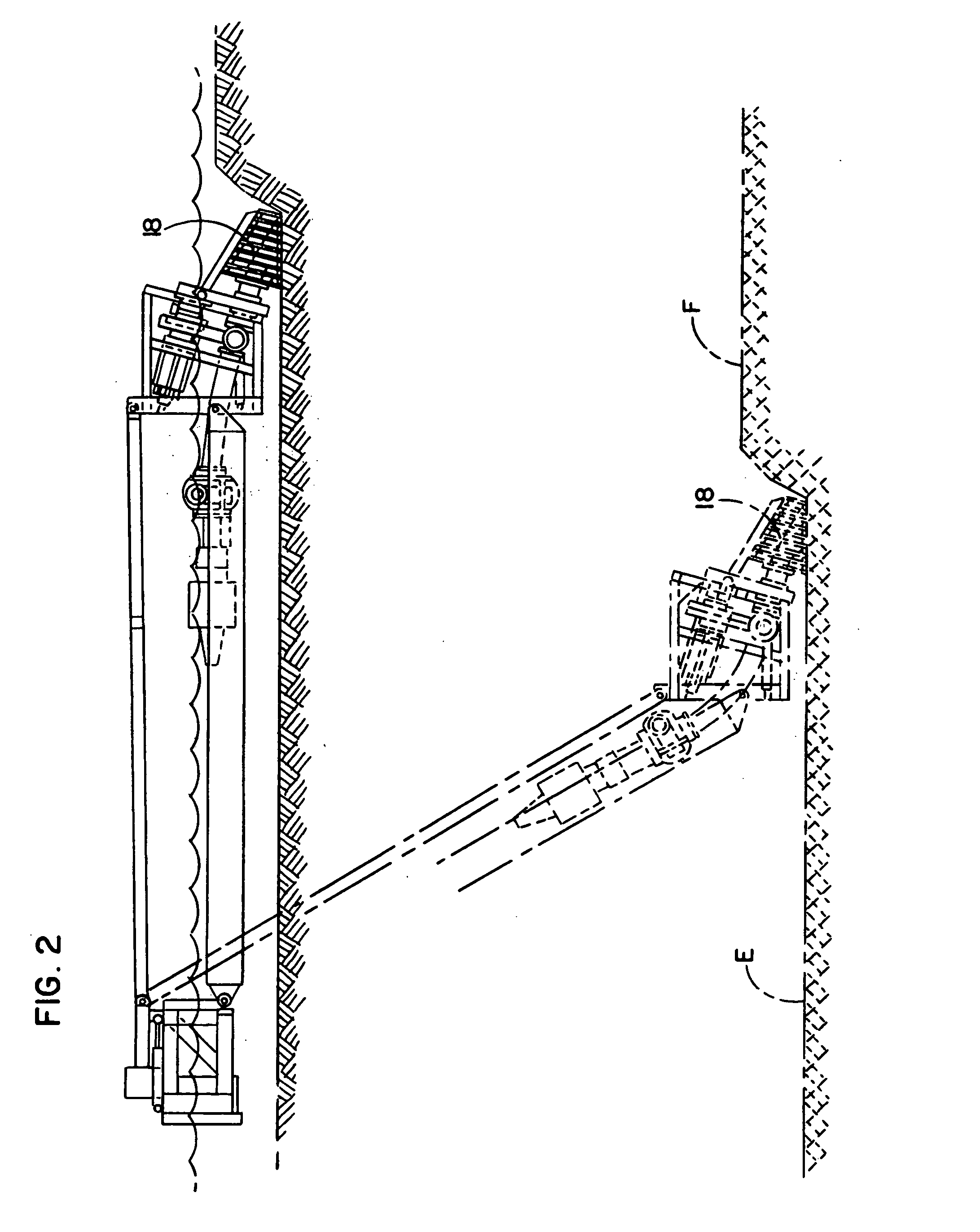Method and apparatus for pumping with a dredge
- Summary
- Abstract
- Description
- Claims
- Application Information
AI Technical Summary
Benefits of technology
Problems solved by technology
Method used
Image
Examples
Embodiment Construction
[0034] As shown in the drawings and in particularly in FIG. 1, there is a first embodiment which comprises a dredge 10 having an articulated or swingable boom 12 which pivots about a pivot mounting 14 with the dredge, which is usually a floating barge or the like. A suction head 16 extends into and is submersed at its lower end in the water. The suction head is mounted on a forward or distal end 15 of the boom and has an intake 18 for intaking material from the submerged bottom as shown in FIG. 2. The illustrated head 16 is also articulated or pivotally mounted at a pivot mounting 20 to the distal end 15 of the boom. As best seen in FIG. 1 the suction head takes a arcuate cut shown by arrow A for a first cut which is then followed by a second cut B between opposite swing points or ends of the arcuate edge C and D in FIG. 1.
[0035] Referring to FIG. 2, the head intake 18 is shown at a lower level E having lowered a harbor bottom 22 at the cut shown in FIG. 2 from the higher elevation...
PUM
 Login to View More
Login to View More Abstract
Description
Claims
Application Information
 Login to View More
Login to View More - R&D
- Intellectual Property
- Life Sciences
- Materials
- Tech Scout
- Unparalleled Data Quality
- Higher Quality Content
- 60% Fewer Hallucinations
Browse by: Latest US Patents, China's latest patents, Technical Efficacy Thesaurus, Application Domain, Technology Topic, Popular Technical Reports.
© 2025 PatSnap. All rights reserved.Legal|Privacy policy|Modern Slavery Act Transparency Statement|Sitemap|About US| Contact US: help@patsnap.com



